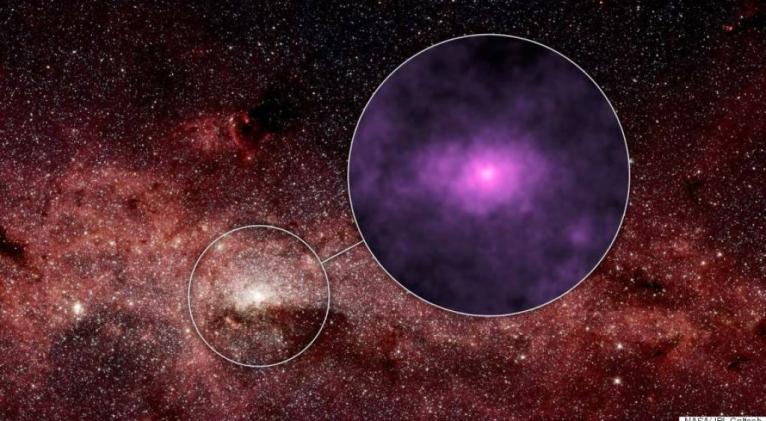Mysterious Glow Detected At Center Of Milky Way Galaxy
especiales

One possibility is that the high-energy X-rays that make up the baffling glow are "'howls' of dead stars as they feed on stellar companions." At least that's the way NASA's Jet Propulsion Laboratory put it in a rather playful news release entitled "NASA's NuStar Captures Possible 'Screams from Zombie Stars."
In more scientific terms, the glow may be evidence of dead stars in binary systems siphoning off material from their companions--a phenomenon that is known to release X-rays.
The dead stars might be white dwarfs or small black holes, according to the written statement. Or the glow could be caused by pulsars--the fast-spinning remains of stars that have collapsed after exploding as supernovae--which send out intense beams of radiation. Alternatively, the glow could arise not from dead stars at all but from high-energy charged particles known as cosmic rays.
No one knows for sure if that's what's causing the glow, which is visible in new images taken by NASA's Nuclear Spectroscopic Telescope Array (NuSTAR) space telescope. The images show a region of space some 40 million light-years across in the vicinity of Sagittarius A*, the monster black hole at the center of the galaxy.
The uncertainty isn't surprising given the distances involved--Sagittarius A* is about 26,000 light-years from Earth--and the fact that the center of the Milky Way is teeming with old and young stars as well as small black holes.
"Almost anything that can emit X-rays is in the galactic center," Dr. Kersten Perez, a physicist at Columbia University in New York City and the lead author of a paper about the finding, said in the statement.
So what exactly is the take-away from the new research?
"This mysterious emission from the galactic center points out the importance of increased spatial resolution at high X-ray energies which increases the clarity of the images," Dr. C. Megan Urry, professor of physics and astronomy at Yale University in New Haven, Conn. and president of the American Astronomical Society, told The Huffington Post in an email. "NuSTAR's ability to focus energetic X-rays is improving our understanding of the high-energy universe--and in some cases, like this new study of the galactic center, to raise interesting new questions as well."
The paper was published April 30, 2015 in the journal Nature.













Add new comment